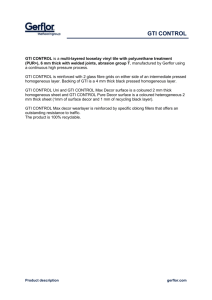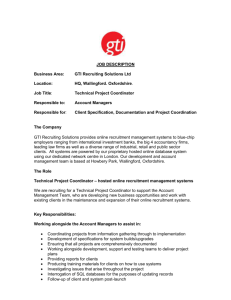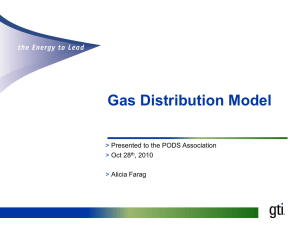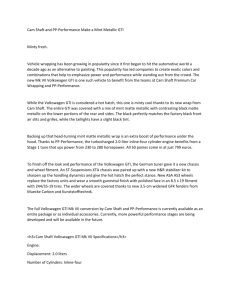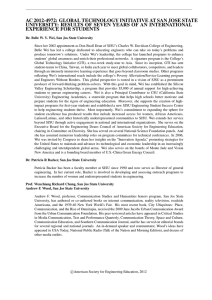GTI on Green Hospital Design
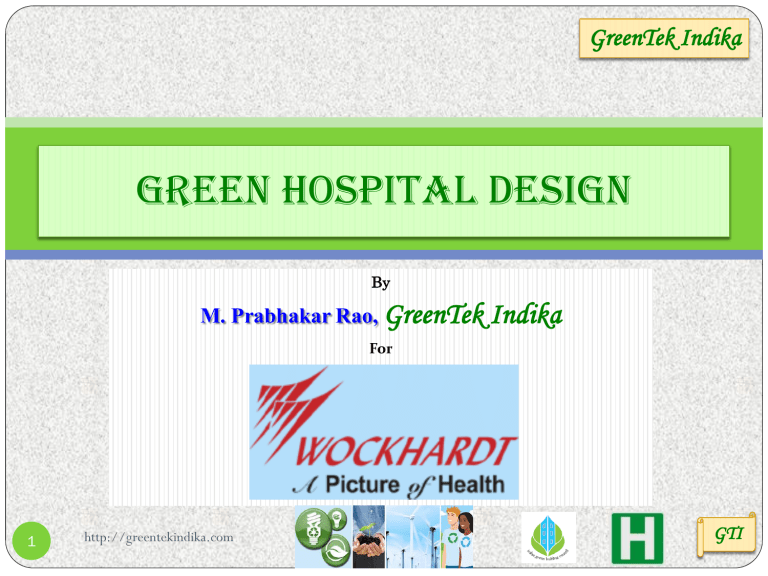
GreenTek Indika
Green Hospital Design
By
M. Prabhakar Rao,
GreenTek Indika
For
GTI
1 http://greentekindika.com
Design Intent:
Design the Hospital Building Layout that disturbs – as little as possible – the environment in which it is being built, during its construction as well as during its useful life.
Establish an O&M culture among the staff & workers based on the best green concepts of Building Management.
Address the optimisation of process water & process power consumption patterns right at the design stage itself to ensure that the Hospital wastes no water or power and consumes as low as is bare minimum, without compromising on the quality of utility or service.
Ensure that the Hospital has adequate ‘indoor healing gardens’, ‘outdoor green walking spaces’ and connectivity to the external live environment to all in-patient spaces, out-patient areas, diagnostic & surgical sections.
GTI
2 http://greentekindika.com
01) Select an Ecofriendly Site:
Avoid farmland, wetlands, flood plains, environmentally sensitive lands, and hazardous substance sites.
Preserve local habitat, green fields, and natural resources.
Minimize heat island (thermal gradient differences between developed and undeveloped areas).
Rehabilitate vacant areas as necessary.
Take advantage of existing transit, water, and energy infrastructure in the community.
Share existing parking/transportation infrastructure.
GTI
3 http://greentekindika.com
02) Plan for a Sustainable Building:
Consider (re)use of existing buildings, including structure, shell, etc.
Design for durability-life cycle costing/value engineering strategy for finishes and systems to reduce waste.
Prioritize parks, greenways, and bikeways throughout the new hospital area.
Provide suitable means of securing bicycles with convenient change/shower facilities for those who cycle to work.
Plan sufficient shade for every façade of each building unit.
Investigate incentives available from the MNRE & Local Govt..
Identify opportunities to incorporate recycled materials into the building, such as beams and posts, flooring, paneling, bricks, doors, frames, cabinetry, furniture, trim, etc.
GTI
4 http://greentekindika.com
02) Plan for a Sustainable Building (Contd.):
5
Design for adaptability of building design as user needs change.
Establish a project goal for locally sourced materials and identify materials and material suppliers that can help achieve this goal; this reduces environmental impact due to transportation and supports the local economy.
Maximize day lighting and view opportunities (building orientation, exterior/interior shading devices, highperformance glazing, photo-integrated light sensors, shallow floor plates, increased building perimeter, etc.).
Provide capacity for indoor air quality monitoring to sustain long-term occupant health and comfort (carbon dioxide sensors integrated into building automation system).
Designate an area for recyclable collection and storage that is appropriate and convenient with consideration given to using cardboard balers, aluminum can crushers, recycling chutes, and other waste management technologies to enhance recycling program.
Consider the installation of an on-site composting facility.
http://greentekindika.com
GTI
03) Energy Management:
6
Orient building to take advantage of solar energy for heating and daylighting, and to encourage natural ventilation and passive cooling.
Consider heat recovery systems where appropriate.
Use computer-simulation model to assist in maximizing energy performance.
Install mechanical ventilation equipment.
Install high-efficiency heating and cooling equipment.
Consider heating/cooling and energy from renewable sources
(e.g., solar, wind, biomass, geothermal, bio-gas, etc.).
Install a lighting control system.
Install high-efficiency lights, appliances, and fixtures with motion/occupancy sensors where appropriate.
Minimize light pollution by proper and judicious illumination.
http://greentekindika.com
GTI
03) Energy Management (Contd.):
7
Design the building with equipment to measure water and energy performance.
Consider task lighting "opening window" technology, and under-floor HVAC systems with individual diffusers.
Exceed minimum insulation requirements for walls, ceilings, etc., as prescribed by the U.S. Department of
Energy.
Install and maintain a temperature/humidity monitoring system to automatically adjust to building conditions and link system to building automation system.
Consider the use of Energy Star and Environmental Choice products wherever possible.
Deploy a monitoring and tracking system for all energy inputs with scheduled reviews to ensure efficiencies are being met.
http://greentekindika.com
GTI
04) Water Conservation:-
8
Limit disruption of storm water flows by minimizing runoff, increase on-site infiltration, and reduce containments through constructed wetlands, bioswales, etc.
Consider collecting storm water runoff for other purposes
(irrigation) on the site.
Consider use of reverse osmosis feed water to feed steam boilers in power plant to reduce chemicals required, produce cleaner steam, increase cycles, and reduce boiler blowdown to the environment.
Evaluate safe strategies to recycle wastewater/gray water for other purposes on the site.
Landscape with drought-resistant native plants and perennial ground covers. Situate building to take advantage of existing vegetation.
Use low-flow taps, nozzles, cisterns and toilets.
http://greentekindika.com
GTI
05) Evaluation:-
Ensure that building elements are installed and calibrated properly to meet the project's environmental health goals in addition to mechanical, electrical, and plumbing system requirements.
Perform a two-week building flush-out or test contaminant levels in building before occupancy.
9
Operation Theater http://greentekindika.com
Integrating Nature & Materials Physiotherapy Section
GTI
Rikshospitalet University Hospital, Oslo, Norway:
Staff survey on the built environment - 2004:-
10 http://greentekindika.com
Low buildings - respect for the surroundings
Interesting, frightening buildings non-
Main street perfect for interaction
Daylight to working – and patient spaces
Good proximities functional
The art, the landscapes and the ambience make staff feel proud of their environment
GTI
06) Indoor Air Quality:-
11
Avoid ozone-depleting chemicals in mechanical equipment and insulation
(zero tolerance for CFC-based refrigerant).
Avoid materials that will emit pollutants, such as solvent-based finishes and adhesives, carpeting, and particle-boards that release formaldehyde.
Audit existing building systems using refrigerant and fire suppression chemicals and remove HCFCs and halons.
Specify refrigeration/fire-suppression systems that use no HCFCs or halons.
Specify materials free from toxic chemicals and that do not release toxic byproducts throughout their life cycle, and avoid those toxins that are carcinogenic, persistent, or bioaccumulative. Key materials to avoid include mercury (switching equipment), arsenic (pressure-treated wood), urea formaldehyde (engineered wood), PVC (floors, wall coverings, furniture, roof membranes, plumbing pipe, electrical wire), and asbestos.
Place air intakes away from vehicles and other such sources of pollution to prevent indoor air contamination.
Adopt an indoor air quality management plan to protect the HVAC system during construction, control pollutant sources, and interrupt pathways for contamination.
http://greentekindika.com
GTI
12
07) Waste Management:-
Encourage environmentally responsible forest management by using wood-based materials certified in accordance with the
Forest Stewardship Council Principles and Criteria or Forest
Department Certified Wood or Forest Dept. Certified Wood.
Incorporate materials that are designed for disassembly and recycle/reuse at the end of functional life.
Ensure adequate space for storage of hazardous waste (e.g., biomedical, chemical, radioactive, harmless organic, plastics, paper, electronic, etc.).
Plan for Waste Heat Recovery Systems to Usable Energy.
Install in-house Organic Waste-to-Kitchen Gas plant to convert all organic waste to Useful Energy.
Deploy Producer Gas plants to convert all horticultural waste-to-
Electricity to be utilised for lawn lighting, etc.
STP to convert all grey-water to bio-composting to be used for landscapes.
GTI http://greentekindika.com
13
08) Use Only Green Building Materials:-
Minimize the use of carpets and other such materials that have the potential to absorb and release indoor pollutants.
Use high-reflectant roofing.
Use high-performance windows (double-glazed, argon, etc.).
Use rapidly renewable building materials, such as bamboo floorings, wool carpets, strawboards, linoleum, poplar OSBs, sunflower seed boards, wheatgrass cabinetries, hemp fabrics, bagasse boards, etc.
Use durable products and materials that require low maintenance.
http://greentekindika.com
GTI
14
09) Think Green During Construction:-
Establish landfill diversion plan (or site and building elements (land clearing debris, cardboard, metals, brick, concrete, plastic, clean wood, glass gypsum wallboard, carpet insulation) and track efforts to comply with recycling/diversion plan.
Protect trees and topsoil during site work.
Centralize cutting operations to reduce job site waste and simplify sorting.
Minimize construction packaging material or return such waste to suppliers for reuse/recycling.
Educate and seek feedback from crews, including subcontractors, about the environmental vision and the importance of green design and construction practices.
http://greentekindika.com
GTI
15
10) Keep Greening:-
Establish a waste separation and recycling program, and educate staff as to the benefits.
Educate and engage staff in all departments in current environmental initiatives and about opportunities to get involved.
Establish a "Green Team" of staff from all departments to monitor progress toward environmental goals.
Draft a measurements and verification plan to compare predicted savings (water, electricity, etc.) with those actually achieved once built.
Create a ‘staff environmental coordinator’ position.
Phase out the use of chemical pesticides on greenspace in favor of organic horticultural approaches.
http://greentekindika.com
GTI
10) Keep Greening(Contd.):-
Adopt green procurement protocols to screen all products for environmental benefits and alternatives.
Develop an environmental management system.
Engage in a "green power" contract with a local utility.
Identify local recyclers / buyers of glass, plastic, organic waste, office paper, cardboard, etc.
Identify and support waste haulers/recyclers who share a green philosophy.
Initiate a policy of purchasing only fairly traded coffee and chocolate products in cafeterias/vending machines.
Develop a wellness initiative to improve the quality of the employee's work life.
16 http://greentekindika.com
GTI
When to Involve your Green Building Designer?
17
What is of primary importance is to achieve an
‘Integrated Green Building Design’, to reap optimum benefits to all stake-holders.
To gain maximum cost-benefit out of your “Green
Building Design”, you should invite aboard your
Green Building Design Facilitator before you touch your project site for preparation, excavating, development, or develop Architectural Designs or
Engineering Plans, etc..
Each facet of a Green Building is dependent on the other Green Features that could go into your project, hence a Project Management Team, comprising your own Management, Architects / Engineering Planners, and Green Building Designers to be formed at an early stage of the project.
http://greentekindika.com
GTI
Advantage GreenTek Indika
Founded by a seasoned Green Building Professional who teamed up with a seasoned team of cross-functional experts.
The Founder of GTI , M. Prabhakar Rao has the distinction of having,
hands on exposure to the World’s First U.S.G.B.C. LEED Rated Passenger
Terminal Building of an Intl. Airport & planning C.D.M Registration /
Carbon Trading, apart from having a deep understanding of the Green
Features of the India’s First U.S.G.B.C. Certified Platinum Rated Green
Building & directly involved with several other Green Buildings in India.
been an active member of I.G.B.C. Steering Committee, which develops
& publishes LEED India & IGBC Green Building Rating Systems, for
India.
been the Chair of the ‘Materials Sub-Committee’ of the IGBC Steering
Committee that reviews the relevant chapter of the Systems, before it was finally adapted & published by IGBC Steering Committee.
been consulted by a few prestigious LEED India Projects and early-bird
Green Homes & Green Factories, in India, a few of which are currently registered with IGBC, under this rating system.
18 http://greentekindika.com
GTI
LEED India (N.C.) Rating System (Jan., 2009)
19
Parking areas need not be considered as part of the built-up area
Fee is inclusive of service tax
Registration and
Certification fee are nonrefundable
Membership discounts can be availed only if the project owner is a member of IGBC
The IGBC will recognize buildings that achieve one of these rating levels with a formal letter of certification and a mountable plaque.
http://greentekindika.com
GTI
20
I.G.B.C. Registered Green Hospitals:-
"Kohinoor Hospital" of Kohinoor Group, Mumbai with a total Built-up Area of
2,27,432 SFT has been awarded LEED India for New Construction (NC), Platinum
Rating.
While, 01) ESI Hospital of Employee State Insurance Corporation, Bangalore with a built-up area of 23,990 SFT, 02) Medica Hospitals Pvt . Ltd. , Kolkatta , with a built-up area of 19,981 SFT, 03) Govt. Mohan Kumaramangalam Medical College and Hospital of Hindustan Latex Ltd, Salem, with a built-up area of 30,148 SFT, 04) Kohinoor City
Hospital of Kohinoor Planet Constructions Pvt. Ltd., with a built-up area of 19,381
SFT, 05) Max Balaji Hospital Phase-2, Patparganj of Max Healthcare Institute Ltd., with a built –up area of 21,368 SFT and 06) Savla Hospital, Navi Mumbai of Shree
Sushroosha Charitable Trust , with a built-up are of 27,871 SFT – are currently under construction, are registered with I.G.B.C..
Other Green Building Rating Systems, available for Certifications are i) LEED India (C.S.), meant for New or Retrofitted Existing Buildings constructed for lease or sale, where substantial Interior work is not in the scope of the Builders, ii) I.G.B.C. Green Factory Rating System meant for
Industrial Buildings and iii) I.G.B.C. Green Homes (with or without Interiors).
Some Useful Links www.igbc.in
www.usgbc.org
www.bee-india.nic.in/ www.ashrae.org
www.greentekindika.com
[Indian Green Building Council]
[U.S. Green Building Council]
[Bureau of Energy Efficiency India]
[American Society of Heating, Refrigerating and Air-Conditioning Engineers]
[Leading Indian Green Building Consultants] http://greentekindika.com
GTI

